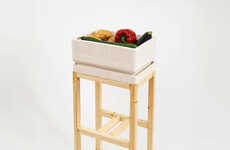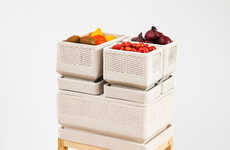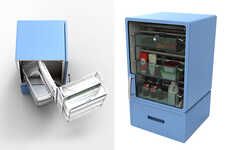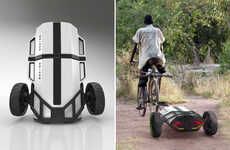
The Mitti Cool Clay Fridge Prevents Food Waste in Developing Countries
Alyson Wyers — July 9, 2014 — Eco
References: mitticool.in & fastcoexist
There are many factors that lead to food waste, making it a difficult issue to solve, even with the existence of the clay fridge. The UN Food and Agriculture Organization estimates 1.4 billion tons of food is wasted every year between consumers in developed countries and supply chain problems in the developing world. While there is no easy fix, the Mitti Cool Refrigerator provides what Co.Exist calls a "stop-gap solution of sorts."
This clay fridge does not need electricity to run and will keep produce and other spoilable foods safer to eat for longer, without replacing a standard refrigerator. Invented by Indian Mansukhbhai Prajapati, the food storage solution is made out of porous Gujarat clay that is eco-friendly and not harmful to human health.
This clay fridge does not need electricity to run and will keep produce and other spoilable foods safer to eat for longer, without replacing a standard refrigerator. Invented by Indian Mansukhbhai Prajapati, the food storage solution is made out of porous Gujarat clay that is eco-friendly and not harmful to human health.
Trend Themes
1. Non-electric Food Storage - The trend of creating non-electric food storage solutions is disrupting the traditional methods of food preservation.
2. Food Waste Reduction - The trend of using clay fridges to prevent food waste is creating innovation opportunities in developing countries.
3. Eco-friendly Food Storage - The trend of using clay and other sustainable materials for food storage is disrupting the industry by providing environmentally friendly alternatives.
Industry Implications
1. Kitchen Appliances - The kitchen appliances industry can tap into the non-electric food storage trend by developing innovative products that cater to eco-conscious consumers.
2. Sustainable Packaging - The sustainable packaging industry can explore partnerships with clay fridge manufacturers to offer eco-friendly options for food storage and transportation.
3. Agriculture and Food Distribution - The agriculture and food distribution industry can incorporate non-electric food storage solutions to reduce food waste and improve supply chain efficiency.
6.1
Score
Popularity
Activity
Freshness























